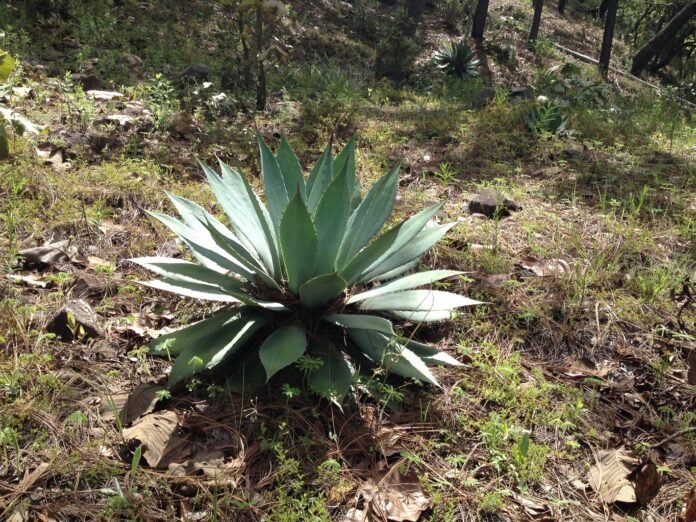The stories about El Tuito’s local ‘moonshine’ existed for ages, including its shadowy history of being illegally produced in remote back woods areas and sold in unlabeled plastic soda bottles to those who knew where to find it.
All that is slowly changing as production is now legal and local distillers are getting better at their craft. This moonshine, known as raicilla, which means little root, can now be found sold in artistic glass bottles in much of Mexico and some states in the US.
The production of raicilla began over 400 years ago among the indigenous communities living in the state of Jalisco, as this is where the most popular raicilla agaves, usually Maximiliana or Lechuguilla, grow.
Both the coastal towns of Cabo Corrientes and the mountainous villages of the Sierra Madre Occidental grow these agaves.
When the Spanish took over Mexico in the 16th century, they heavily taxed raicilla, hoping that their Spanish wines and liquors would become more popular. Rebelling against this taxation led raicilla to go underground for a long time.
Today, the three agaves, tequila and raicilla from Jalisco and mezcal from Oaxaca are all similarly produced. The different varieties of agave and their terroir (environmental factors that affect a crop) determine the differences in their taste.
Compared to its agave cousins, raicilla is considered the most fragrant and fruity and possibly the most versatile for mixing. Raicilla has a more subtle, less aggressive flavor and is described as having a bouquet of citrus and floral aromas highlighted by notes of orange blossom, hibiscus, beach plum, and roasted pineapple. Some will be smokier than others.
Raicilla production is still done in small batches and is considered an artisanal craft.
In 2019, the Council of Raicilla Producers in Mexico finally received the denominacion origen status, the same accreditation as mezcal and tequila.

My friend Miguel has produced his artisan raicilla for about twelve years on his property in El Tuito. He explained that it takes seven years for the agave to be ready for harvest, usually in February.
The tough leaves are cut off, revealing the root ball, which looks like pineapple or piña. These piñas, weighing about 80 kilograms (175 pounds) each, are cut into chunks and placed in his wood-fired pit oven to cook for 2-3 days until they are ready to be ground into mash and fermented in barrels.
After two weeks, the barrels will be checked daily to determine when they are ready for distillation. It takes 30 gallons of fermented liquid to make one quart of raicilla. Miguel does a double distillation to reduce the methanol, a byproduct of the fermentation process. He feels that this second distillation results in a smoother flavor. He ends up selling about 200 bottles each season from his ranch in the pine-covered hills just north of El Tuito.
Sadly, Miguel passed away a couple of years ago. His family now carries on his legacy.
More stories like this: www.yourculturalinsider.com


